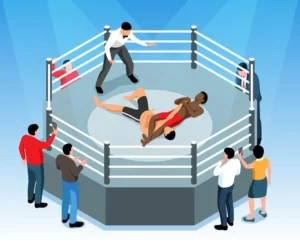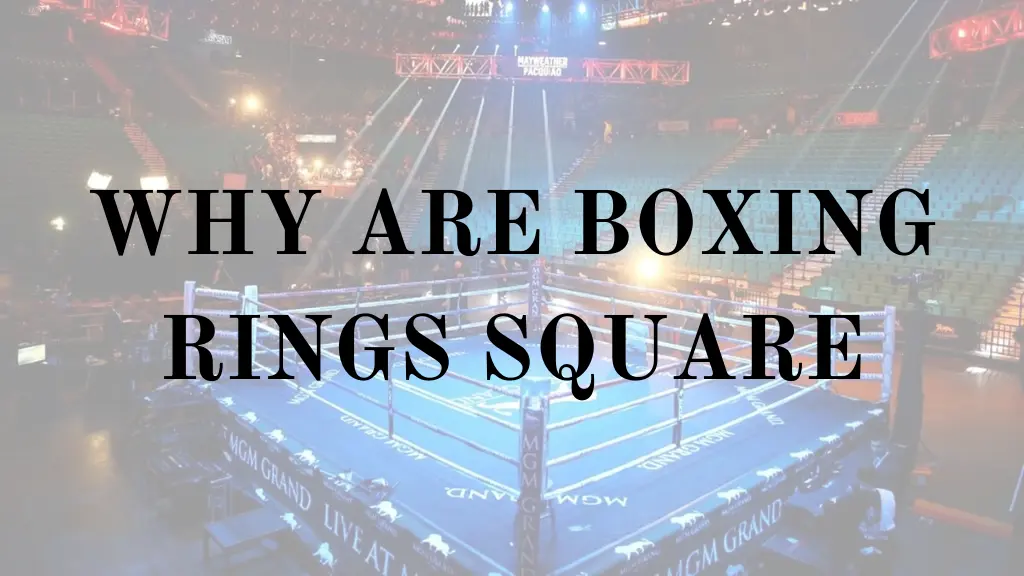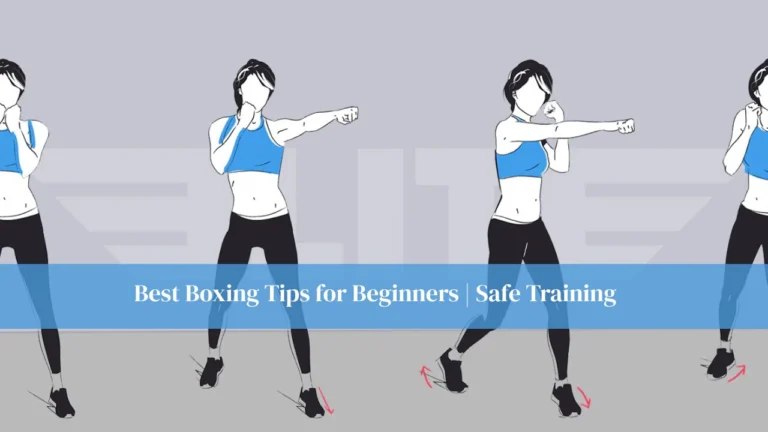Boxing, a sport that has fascinated and entertained millions for centuries, often takes place in a peculiar setting – a square ring. While the term “boxing ring” might seem like a misnomer, there’s a fascinating history behind this unconventional choice of shape. In this article, we will delve into the reasons why boxing rings are square and explore the advantages, safety considerations, and even the psychological impact of this unique design.
The Origins of Square Boxing Rings
The square shape of boxing rings can be traced back to the sport’s origins in ancient Greece. These early boxing matches took place in a sand-filled area, enclosed by spectators, which eventually evolved into the squared-off rings we see today. The square shape made it easier for spectators to have a clear view of the action, setting the precedent for generations to come.
Advantages of Square Boxing Rings

Square rings offer several practical benefits in the world of professional boxing:
Clear Divisions for Fighters
Square boxing rings are characterized by their four distinct corners, which play a crucial role in providing clear divisions for fighters. These corners demarcate the ring, leaving no room for ambiguity when it comes to a fighter’s location during a match. This aspect is fundamental in ensuring a level playing field and a fair competition.Ensuring Fairness
The presence of clearly defined corners within the square ring contributes significantly to the fairness of the fights. It eliminates the possibility of fighters claiming that they were positioned in an obscure or disadvantageous area of the ring, which can often lead to disputes and controversies. As a result, square rings help maintain a sense of integrity and justice within the sport.Tactical Advantage
Square rings offer fighters a unique tactical advantage. They can strategically utilize the corners for various maneuvers, both defensively and offensively. Fighters can use the corners to trap their opponents, gain leverage using the corner ropes, or create openings in their opponent’s defense. This tactical element adds depth and complexity to the matches, making them more intriguing and unpredictable.Enhanced Engagement and Dynamism
The ability to employ corners for tactics injects a level of engagement and dynamism into bouts that are distinct from square rings. This dynamic nature of the fights keeps both the fighters and the audience engaged and excited throughout the match. The matches become a chess game of sorts, with fighters constantly seeking to outmaneuver and outsmart each other.Improved Spectator Experience
The dynamic and engaging nature of bouts in square rings significantly enhances the overall spectator experience. The constant action and the strategic use of corners make the matches more captivating and entertaining for the fans. The audience is drawn into the excitement and unpredictability of each fight.Tradition and Legacy
Square rings have a rich tradition in professional boxing. This design harks back to the sport’s origins in ancient Greece and has become an iconic symbol of the sport. It carries a sense of tradition and nostalgia, connecting the present-day matches with the historical roots of the sport. This traditional element adds a layer of depth and significance to the bouts, making them more than just athletic contests; they become a part of boxing’s storied legacy.
Safety Considerations in Boxing Rings
Safety considerations in boxing rings are of utmost importance, and the square shape of these rings plays a significant role in safeguarding the well-being of the fighters. Here’s a more detailed explanation of the safety benefits of square boxing rings:
Preventing Entanglement
The square design inherently reduces the risk of fighters becoming entangled in the ropes. The right angles of the square ring minimize the chances of a fighter’s head, arms, or legs getting caught in the ropes during the heat of battle. This feature is crucial in preventing potentially dangerous situations that can result from entanglement, such as accidental choking or injuries.
Quick Escape
In the event of a clinch or when a fighter needs to break free from an opponent’s hold, the square ring’s design offers a distinct advantage. The corners provide clear and easily accessible exit points, allowing fighters to escape from potentially precarious situations swiftly. This not only ensures the fighters’ safety but also maintains the flow of the match, making it more dynamic and engaging.
Minimizing Unintended Consequences
The absence of curves and corners in square rings helps minimize unintended consequences during a match. Fighters can navigate the ring more predictably, reducing the chances of accidental collisions or tripping over ropes, which could lead to injuries.
Consistency in Design
Boxing organizations and associations have strict regulations regarding the dimensions and design of boxing rings. The square shape offers a consistent and standardized design that ensures fairness and safety across different venues and competitions.
Enhancing Fighter Confidence
The safety features of square rings can also enhance fighter confidence. Knowing that they are less likely to encounter unexpected obstacles or hazards during a match allows fighters to focus on their tactics and performance, leading to a more competitive and safe environment.
Square vs. Round Rings

The choice between square and round rings in combat sports, each with its unique characteristics, presents an interesting contrast. Let’s delve deeper into the differences between square and round rings:
Square Rings
Square rings are the standard choice in professional boxing. With their four corners, they create a confined space that encourages constant action and engagement. Fighters have fewer areas to escape to, resulting in closely contested matches that demand precise footwork and strategic movements. The limited space forces fighters into confrontations, making for intense exchanges and a captivating experience for both fighters and the audience.
Round Rings
Round rings, while less common in professional boxing, offer a different dynamic. Their circular shape provides more room for fighters to maneuver around the perimeter. This design allows for easier evasion and circling, emphasizing agility and lateral movements. This results in a unique pacing and rhythm during matches, with fighters relying on their ability to circle, change directions, and control the distance between themselves and their opponents.
Conclusion
In the realm of boxing, the square ring is more than just a geometric choice; it’s a symbol of tradition, strategy, and psychological intensity. While it might seem paradoxical that boxing rings are square, this design has endured the test of time, offering both practical advantages and a unique aesthetic. The square ring remains an iconic element in the sport’s history, contributing to the rich tapestry of professional boxing and its enduring appeal.
FAQs
Why are boxing rings square?
Boxing rings are square primarily due to their historical origins in ancient Greece, where the sport evolved in sand-filled enclosures with clear divisions for fighters.Are round rings used in boxing?
Round rings are uncommon in professional boxing but are used in other combat sports like professional wrestling.What advantages do square rings offer?
Square rings provide clear divisions, encourage strategic use of corners, and reduce the risk of fighters getting trapped in ropes.
Related Post




